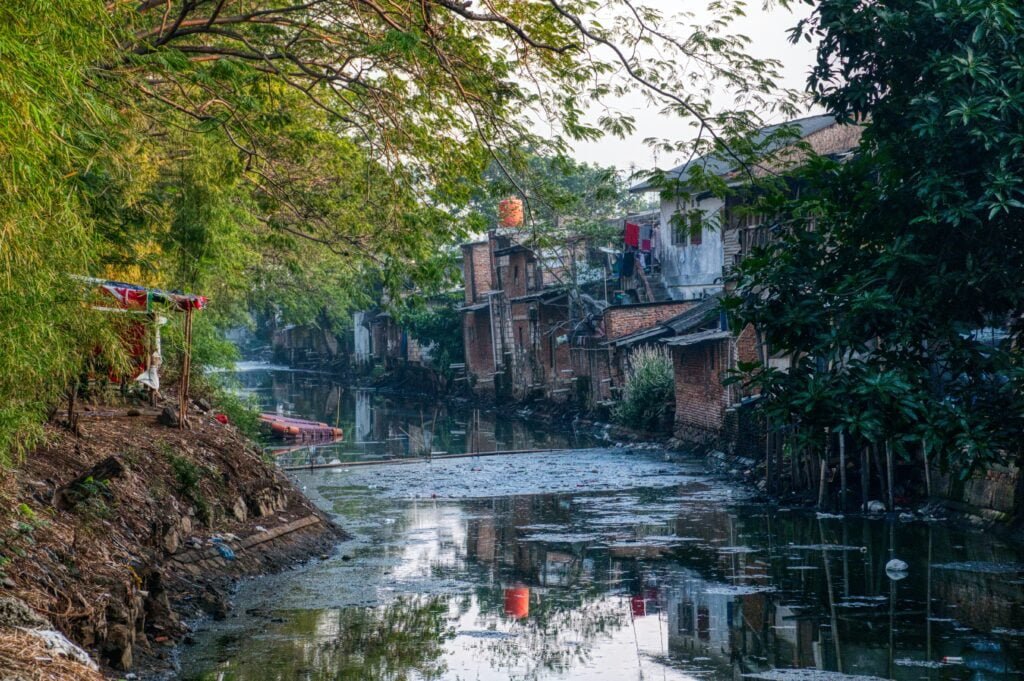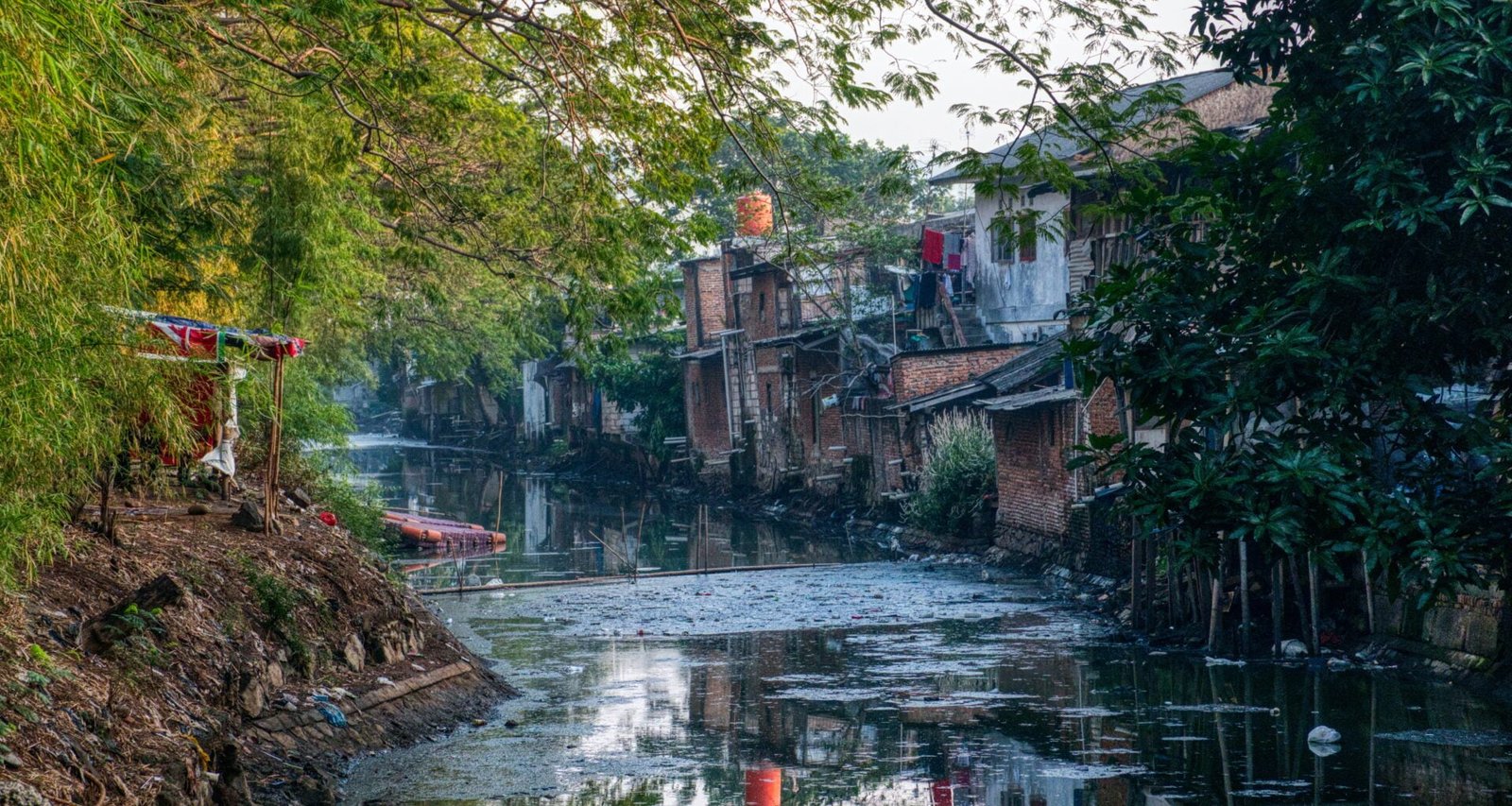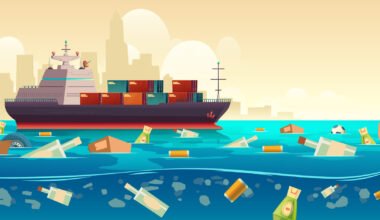Modern challenges of water pollution transcend geographic, social, and economic boundaries, emerging as a global issue. Water quality and sustainability are threatened by toxins entering our planet’s water ecosystems. This widespread issue stems from industrial runoff, agricultural activities, poor waste management, and urban growth. This pollution harms the ecosystem and humans outside the watery domain.
Toxins alter ecosystems, causing species extinction and ecological imbalances in aquatic life. Polluted water causes waterborne infections and long-term health problems, which harm human populations. Clean water shortage worsens social and economic inequality, disproportionately harming disadvantaged communities. Understanding water pollution’s causes, forms, and effects is essential to developing successful mitigation solutions. Exploring this subject may lead to technology advances, legislative improvements, and public awareness initiatives. As we learn more about water contamination and its effects, worldwide action is needed to protect one of our most critical resources.

Sources of Contamination
Different human and natural factors cause water pollution. Heavy metals, chemicals, and effluent from industrial pollute waterways. Agricultural runoff pollutes streams with pesticides, fertilizers, and silt. Urban stormwater runoff carries contaminants from highways, roofs, and building sites. Improper residential and corporate trash disposal pollutes water systems.
Mining and untreated sewage leak poisons and heavy metals into adjacent water sources, while poor sanitation introduces microorganisms. Erosion occurs when rainwater carries silt and nutrients from land into waterways. Understand these different sources to build effective solutions to reduce water pollution and maintain our water resources.
Types of Water Pollutants
Water contaminants include several compounds that harm aquatic habitats. Chemical composition, origin, and consequences on ecosystems and human health classify these contaminants into numerous categories.
Chemical Pollutants
- Chemical pollutants include heavy metals (mercury, lead), industrial chemicals (PCBs, dioxins), and pesticides. Chemical contaminants affect aquatic life and accumulate in food systems, endangering animals and humans.
Nutrient Pollutants
- Eutrophication is caused by excessive nitrogen and phosphorus from agricultural runoff and wastewater. This increases algae development, depleting oxygen and harming aquatic life.
Physical Pollutants
- Sediments, suspended solids, and thermal pollution are physical pollutants. Sediments suffocate aquatic ecosystems, and industrial water temperatures kill delicate species.
Biological Contaminants
- Pathogens like bacteria, viruses, and parasites are biological pollutants. They may cause waterborne infections, endangering communities who drink polluted water.
Microplastics
- These microscopic plastic particles from bigger plastic products pollute. Aquatic species may consume microplastics, entering the food chain.
Radioactive substances
- Nuclear operations may leak radioactive elements into waterways, causing long-term health and ecological problems.
Emerging Contaminants
- Pharmaceuticals, personal care items, and endocrine-disrupting chemicals are emerging contaminants. They may have small but major effects on aquatic ecosystems and public health.
Understanding the many forms of water contaminants is essential for controlling pollution and protecting aquatic habitats and human health.
Ecological Consequences
Water pollution has far-reaching biological effects, threatening aquatic ecosystems. This disturbance has several effects, including biodiversity loss. Pollutants in aquatic bodies kill many species, affecting food chains and ecological connections. Fish die-offs, declining aquatic bug populations, and underwater plant community deterioration are symptoms of this degradation. Pollutants can change water’s physical and chemical qualities, making aquatic creatures’ habitats unsuitable.
Eutrophication from excessive nutrient contamination accelerates unsustainable algae growth. Dead zones where aquatic life cannot survive result from low oxygen levels. Bioaccumulation and biomagnification worsen the dilemma by accumulating contaminants in organism tissues and growing up the food chain, endangering apex predators and humans. The vast biological effects of water pollution highlight the complex interaction of life in aquatic habitats, underlining the necessity for comprehensive solutions to repair and protect these vulnerable ecosystems.
Human Health Implications
Since polluted water supplies may harm populations, water pollution has serious health consequences. Polluted waterways breed cholera, dysentery, and hepatitis epidemics. Pathogens and bacteria contaminate drinking water, endangering individuals who use it for sanitation and everyday use. Polluted water may cause persistent gastrointestinal, skin, and respiratory difficulties. Children, the elderly, and socioeconomically disadvantaged groups frequently suffer the most from these health effects, worsening inequities.
The economic impact of waterborne illness healthcare bills and lost productivity further burdens afflicted areas. The complex relationship between water quality and human health emphasizes the need for effective water management, sanitation, and policy initiatives to provide safe and clean water for everyone.
Societal and Economic Aspects
Water contamination affects communities and economics beyond ecosystems. The livelihoods of fishing and tourist groups are threatened. Fish populations decline in contaminated waterways, threatening fisheries and their revenue. Polluted water undermines recreational areas, discouraging visitors and hurting local economy. As waterborne infections rise, healthcare costs rise. Poor populations without safe water face the brunt of these health challenges. Increased socioeconomic gaps perpetuate poverty cycles. Cleanup and remediation require large government and industry expenditures, diverting resources from other uses.
Environmental justice problems arise because underprivileged people typically suffer pollution’s repercussions. Systemic resource allocation and access to fundamental requirements are highlighted by water contamination disparities. Water pollution’s social and economic impacts need comprehensive solutions that promote equal access to clean water, sustainable economic growth, and targeted assistance for vulnerable areas.
Monitoring and Assessment
Effective monitoring and evaluation are essential for understanding water contamination and developing solutions. To track contaminants and aquatic system health, water quality monitoring entails frequent sample and analysis. Pollution levels are determined by chemical composition, nutritional levels, and biological markers. Remote sensing and sensor networks improve real-time data collecting across huge water bodies. These tools enable rapid pollution response by revealing geographical and temporal patterns.
Long-term monitoring sets baselines and finds new contaminants. It helps evaluate mitigation and restoration initiatives. Risk assessments also analyze pollutant effects on human health and ecosystems to inform regulation. Effective monitoring systems need government, research, and community involvement. Open data sharing and communication are vital for informed decision-making and public awareness. We can understand pollution patterns and protect vital water resources by rigorously monitoring and measuring water quality.
Mitigation Strategies
Water pollution must be prevented, controlled, and reduced using a variety of mitigating techniques.
Source Reduction
- A fundamental technique is to reduce pollution at its source. This entails improving waste management in businesses, agriculture, and cities to reduce water pollution.
Wastewater Treatment
- Industrial and municipal wastewater must be treated in robust facilities to remove contaminants before disposal. Advanced biological and membrane filtration technologies are crucial.
Stormwater Management
- Stormwater management is essential to avoid river contamination from urban runoff. Innovative technologies like permeable pavements and retention basins reduce pollution. Permeable pavements filter rainfall, while retention basins hold excess runoff to settle pollutants before water reaches the environment. These methods help preserve waterways and aquatic habitats.
Erosion Control
- Preventing sediment from damaging streams requires strategic vegetation planting and silt barriers. Silt barriers prevent sediment-laden runoff from entering waterways, while vegetation stabilizes soil and reduces erosion. We can prevent silt pollution and protect aquatic environments by taking these steps.
Green Infrastructure
- Wetlands, buffer zones, and riparian vegetation filter pollutants before they reach streams. These natural barriers seal silt, fertilizers, and toxins from aquatic environments, protecting water quality. Preservation and restoration of these natural features may strengthen water resources and aquatic environments.
Regulatory Measures
- Environmental legislation and enforcement are essential to reducing pollution. Pollutant discharge limitations, zoning rules, and sanctions encourage responsibility.
International Cooperation
- International agreements and alliances are needed to combat cross-border pollution. We can fight pollution globally by forming international coalitions. These agreements enable shared accountability, effective communication, and coordinated efforts to address transboundary contamination and protect our global water resources.
Restoration
- Polluted waterways may be restored via cleaning and ecological restoration. Removing pollutants, restoring natural habitats, and fostering biodiversity may help clean up polluted water systems, benefiting the environment and populations who depend on them.
Societies can reduce water pollution and protect this vital resource for future generations by combining and adapting these techniques.
Public Awareness and Education
Public awareness and education are key to fighting water contamination. Informing communities on clean water, its relevance to well-being, and pollution’s effects may encourage responsibility and action. Education helps people make educated decisions about home chemical usage and sustainable living. Public awareness campaigns spread good change by exposing the connection of water systems, ecosystems, and human health.
Education also inspires water quality activists. Monitoring pollution, reporting events, and holding companies responsible are more probable in engaged communities. Educating adolescents about water conservation and pollution avoidance instills responsibility as they inherit the world.
Workshops, seminars, social media campaigns, and community events by governments, NGOs, and grassroots groups raise public awareness. Societies can preserve and restore clean water for future generations by promoting water resource care.
International Cooperation
World collaboration is needed to fight water pollution. International cooperation is needed to combat transboundary pollution and its effects. Nations can protect water resources and create a greener future by sharing information and taking action.
Information Sharing
- Collaborative platforms help countries discuss pollution causes, trends, and best practices. Sharing this information helps detect and solve pollution-related issues. This coordinated strategy improves water contamination mitigation and worldwide pollution dynamics knowledge.
Policy Alignment
- Environmental laws and standards worldwide unite against pollution. Countries work together to combat pollution via international accords. Collaborative efforts to prevent pollution and protect our common water resources are supported by these worldwide frameworks.
Joint Research and Innovation
- Innovative pollution-fighting technologies and methods are developed via collaborative research. Combining resources and skills speeds water pollution treatment. International alliances provide quicker and more effective pollution prevention and water ecosystem protection by sharing knowledge and skills.
Capacity Building
- Developed nations may help developing countries with monitoring, regulatory enforcement, and environmental cleanup. These collaborative programs help developing countries control water pollution via information exchange, capacity development, and technology transfer. Cross-border collaborations make water resource protection more fair and sustainable worldwide.
Emergency Response
- Emergency response measures must be coordinated to quickly control transboundary pollution emergencies. Nations can reduce the ecological and health implications of cross-border pollution dispersion by developing consistent procedures and communication channels. This collaborative method protects global water supplies and ecosystems with a quick and coordinated reaction.
Funding & Aid
- Developed nations help poor nations decrease pollution and improve water infrastructure. These agreements help developing countries prevent pollution and manage water by giving funding, technology, and knowledge. This funding promotes worldwide environmental sustainability and fair access to clean water.
The UN’s Sustainable Development Goals, bilateral agreements, and regional entities demonstrate international collaboration on water pollution. Nations may collaborate to enhance water quality, ecosystems, and quality of life globally.
Future Prospects
Looking forward, water pollution solutions are difficult yet hopeful. Population growth, urbanization, and climate change will increase water resource demands. However, understanding of pollution’s far-reaching effects has spurred reform. Advanced sensor networks for real-time monitoring and cutting-edge remediation methods for developing contaminants are available.The UN’s Sustainable Development Goals and Paris Agreement on climate change show global pollution reduction initiatives. Including pollution management in sustainability frameworks enables a comprehensive approach. Public awareness and activism are also making governments and corporations more environmentally responsible.
Policy changes that encourage sustainable behaviors and restrict pollution sources also affect future possibilities. Pollution levies and market-based systems may encourage cleaner manufacturing. While water degradation is unavoidable, our collective determination to combat it and expanding array of solutions spark hope for a future with clean water. Innovations, teamwork, and educated decision-making may help us preserve clean, ample water supplies for future generations.
Conclusion
“Diving Deep: Exploring Water Pollution and Its Impact” illuminates the complex issues and solutions surrounding water contamination. Collective effort across countries and disciplines is needed to address this global catastrophe. Water pollution’s consequences on ecosystems, human health, and economy are worrisome, but multinational cooperation, technical advances, public awareness, and legislative changes provide hope. Clean water is essential as populations, urbanization, and environmental changes increase globally. Education, sustainable practices, and strict laws may lead to cleaner rivers and better quality of life for future generations. The fight against water pollution is continuing, but this investigation shows mankind how to build a more sustainable and resilient water future.








